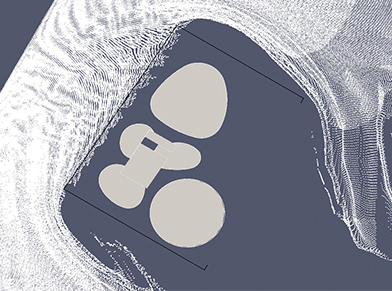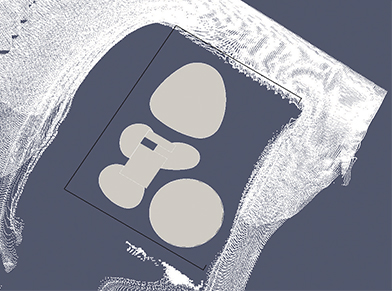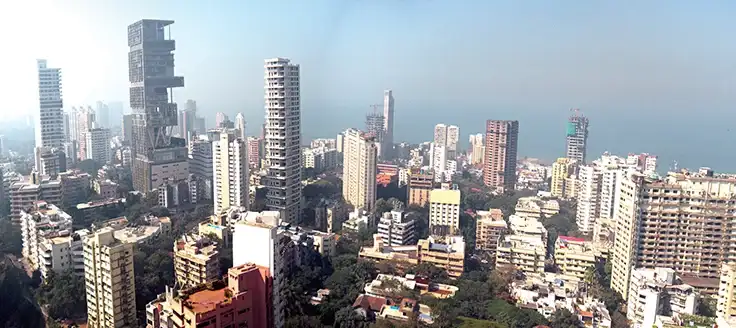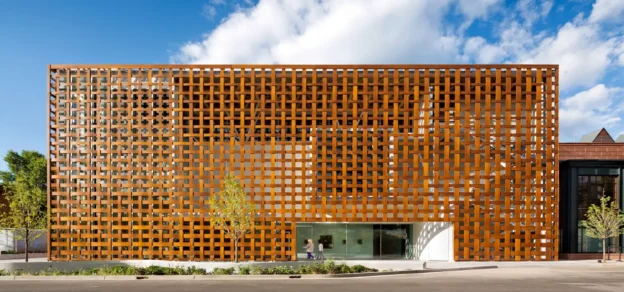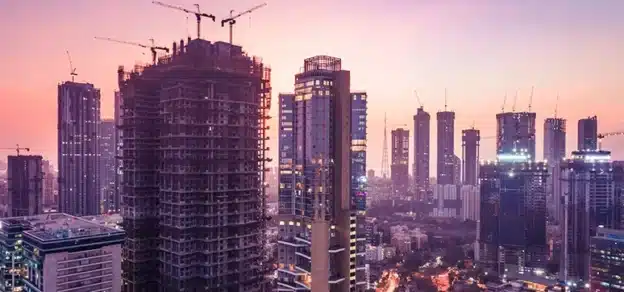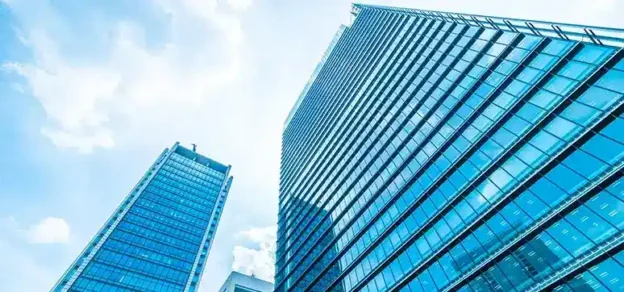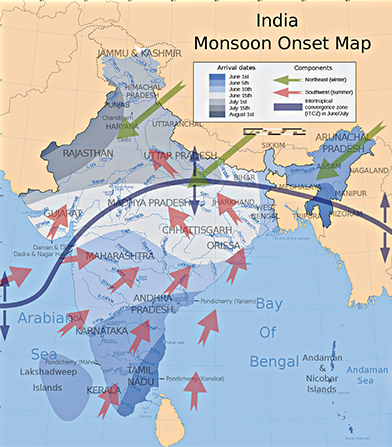
One of the primary purposes of a building is to protect the inhabitants, contents and the structure itself from the harmful effects of extreme weather and to keep them comfortable during more typical conditions. On the subcontinent of India, where the range of climatic conditions includes some of the most extreme climates in the world, this is no small challenge.
For example, some northern areas near the Himalayas have a temperate and even alpine climate, whereas north-western parts of India have an arid hot desert climate. Beyond that, however, much of India’s coastal areas can be classified as tropical wet or tropical wet-dry (monsoon) climate. In addition, the Bay of Bengal, to India’s east, regularly spawns a half dozen or more cyclones per year—the equivalent of hurricane season in the Western Hemisphere’s Caribbean Ocean— typically delivering high winds and heavy rainfall. Thus, structures in many areas of India must be designed to accommodate extreme wind, rain, and the combination thereof. For example, this weather phenomenon is especially important to consider in India’s humid northeast and southern parts of India, where 180 days of rainfall can be expected in a year, but less so in its arid regions.
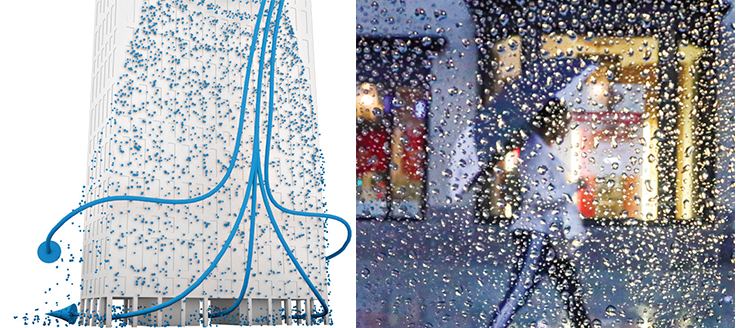
Such heavy rainfall can be particularly difficult to accommodate in areas where people expect to be protected. Public areas that have been designed to maintain comfort through overhead coverage combined with ventilation, such as covered malls or building entrances, can be compromised when rain is accompanied by thunderstorms and squalls generating sudden gusty winds. Patrons can get wet, and annoyed; floors can become dangerously slippery; and finishes and electrical circuitry can be exposed to water. In India, this tends to occur during the south-west monsoon, predictably from June through September but also is not uncommon in the pre- and post-monsoon seasons. In addition, tropical cyclones that occur each year are the source of the most extreme type of weather phenomena where both heavy rain and winds occur. India’s eastern coastal areas are especially prone to regularly experiencing such weather phenomena.
How Wind Engineers Help Develop Solutions
The critical element that allows engineers to specify or design an effective building envelope is a determination of the actual conditions the building will experience. Specialists in wind engineering are familiar with how differently the wind can affect different parts of the building, depending on location, building geometry, and nearby structures or natural features. These variations figure into structural loads and cladding loads, but adding rain to the mix further complicates the selection process. Wind can drive the rain into openings or exposed areas in sometimes unexpected ways, and architectural features may make rainwater problems even worse.
Consulting with an engineer or firm that specialises in the effects of wind and rain can help avoid future problems, especially those brought about by windblown rain. Typical problem areas include infiltration into areas where people expect to be sheltered and flooding leading to adverse effects on drainage systems, rainwater harvesting systems, and equipment such as exposed elevators in locations that designers anticipated would be sheltered from the rain. Based on an analysis of the local climate, smart adjustments to a building’s orientation, openings, and use of elements such as louvers and wind deflectors often can save both capital costs and operating costs associated with managing rain and its effects.
An experienced wind engineer can show you where the rain will go, how often it will go there, and how to make it go somewhere else.
Begin with a Site Evaluation
A project typically begins with an analysis of wind and rain patterns at the site. Although there are great variations in climate on the Indian subcontinent, as previously noted, there also is a great deal of historical weather data available. The India Meteorological Department (IMD) has compiled data from a uniform network of more than 1,400 weather stations, analysing rainfall trends and variability between 1901 and 2003, which provides an excellent starting point for analysis. In addition, in 2002 researchers published average annual driving rain indexes (AADRI) that they had developed for 350 stations spread all across India. The data also can be used as good input by wind engineers who are analysing the façade system suitability or planning wind tunnel tests by which to do so.
As an aside, based on the calculated AADRI values, about 75 percent of the 350 stations throughout India were designated as shielded sites, the lowest rating on the researchers’ four-step scale. Only a few stations in Maharashtra and Meghalaya were classified as having severe exposure, the highest rating. Several coastal areas, a few hilly regions, and some regions in northeast India were rated as having moderate or high exposure. Overall, this reinforces the importance of beginning with a site analysis when investigating the likely effect of wind driven rain on a building.
The next step would be to combine the rainfall and AADRI data with information about the prevailing wind directions and speeds along with actual frequencies, intensities and durations of rain events— both typical and extreme. At that point, the risk of rain infiltration can be estimated based on the climate analysis, building massing, and the physics of droplet trajectories.
Further Modelling, as Indicated
When it appears that rain penetration could be a problem, a computational fluid dynamics (CFD) model can then be made to understand what is taking place and why. By including the site and surrounding environment in the CFD model, the wind direction(s) and speed(s) can be simulated while also accounting for the effects of terrain and other structures in the area. The model can also be used to evaluate proposed mitigation measures. If other CFD models of the area exist, such as from other nearby projects, they can sometimes be appended to the new model to take advantage of all available data.
The rain itself is simulated as individual moving particles. Starting with a cloud of spherical averagesized raindrop particles, the model can track each particle as it moves through the simulation, accounting for the effects of gravity, drag, and the air flow due to the influence of flow patterns generated by the structures in the model. By making the droplet diameters larger or smaller, different types of rain events can be simulated—for example an intense thunderstorm versus a cyclone—within the model. By looking at the distribution of particles on surfaces, the relative wetness of those surfaces can be determined, providing valuable information to those specifying or designing architectural solutions.
As a senior wind engineering consultant with RWDI, I lead a team of more than 30 highly experienced wind engineers on projects in India and around the world. Our completed projects include supertall towers, long-span bridges, airport, and stadia in all types of climates, many of which have involved boundary layer wind tunnel testing as well as CFD analysis. Regardless of the challenge, we have consistently expanded the limits of what is possible.
CFD analysis allows the wind engineer to tune building response and the performance of components, such as the façade, by rotating the model with respect to prevailing or peak winds. In the case of India’s south-west and north-east monsoons, this can help the design team select an optimised building orientation for new structures. Similarly, modifications proposed to an existing building for mitigation of windblown rain problems can be evaluated and quite possibly improved prior to undertaking the cost of installation and possible disappointment in performance.
